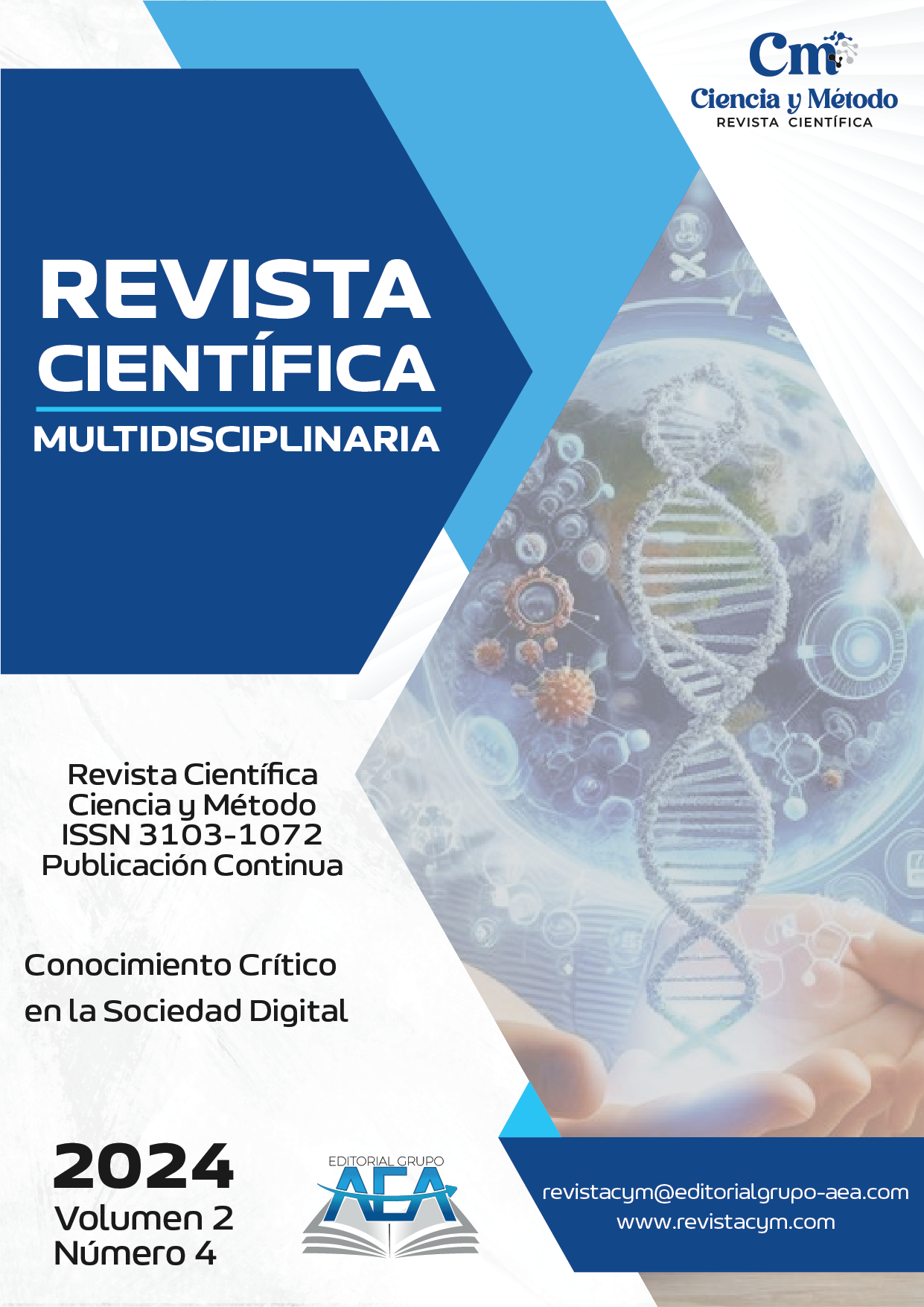Integration of augmented reality technologies in interactive advertising campaigns
Main Article Content
Abstract
The study analyzes the integration of augmented reality technologies in interactive advertising campaigns, highlighting its potential to transform brand communication through immersive experiences that combine virtual content with the physical environment. Through an exploratory literature review of publications between 2010 and 2024, empirical and conceptual research extracted from databases such as Scopus and Web of Science was compiled. The main findings show that augmented reality facilitates competitive differentiation by increasing consumer attention, advertising recall and emotional involvement. Perceived ease of use and added value emerge as decisive factors in the acceptance of these technologies, while the perceived risk of data privacy is a relevant obstacle. Personalized experiences, interactivity and the hedonic component consolidate favorable attitudes towards the brand and stimulate purchase intent. The study concludes that the success of these campaigns depends on balancing technological sophistication, operational simplicity and user trust, while requiring an integrative theoretical framework to guide the strategic design of augmented reality experiences capable of generating sustainable value in a highly competitive media environment.
Downloads
Article Details
Section

This work is licensed under a Creative Commons Attribution-NonCommercial 4.0 International License.
How to Cite
References
Alonso Roa, W. J., Díaz Villareal, S. A., & Torres Daza, D. (s. f.). Desarrollos publicitarios en el escenario de la realidad aumentada (Tesis). Universidad Libre. https://hdl.handle.net/10901/7219
Arango Osorio, K. (2020). Integralex App: Propuesta de marketing experiencial basada en la experiencia de usuario apoyada en la realidad aumentada, como un medio de visualización en el proceso de elección del mobiliario de cocina en la empresa Crear Integrales de la ciudad de Dosquebradas (Monografía de Diseño Industrial). Universidad Católica de Pereira. https://repositorio.ucp.edu.co/entities/publication/0304ceb9-7d9a-402b-9c82-a31ba39075be
Davis, F. D. (1989). Perceived usefulness, perceived ease of use, and user acceptance of information technology. MIS Quarterly, 13(3), 319–340. https://doi.org/10.2307/249008 DOI: https://doi.org/10.2307/249008
Flavián, C., Ibáñez-Sánchez, S., & Orús, C. (2019). The impact of virtual, augmented and mixed reality technologies on the customer experience. Journal of Business Research, 100, 547–560. https://doi.org/10.1016/j.jbusres.2018.10.050 DOI: https://doi.org/10.1016/j.jbusres.2018.10.050
Hurtado-Guevara, R. F. (2022). Optimización de estrategias de marketing online para el éxito del Pasaje Comercial ’Daza Mendoza’ en La Concordia: Un estudio de caso. Journal of Economic and Social Science Research, 2(3), 26–39. https://doi.org/10.55813/gaea/jessr/v2/n3/55 DOI: https://doi.org/10.55813/gaea/jessr/v2/n3/55
Javornik, A. (2016). ‘It’s an illusion, but it looks real!’ Consumer affective, cognitive and behavioural responses to augmented reality applications. Journal of Marketing Management, 32(9–10), 987–1011. https://doi.org/10.1080/0267257X.2016.1174726 DOI: https://doi.org/10.1080/0267257X.2016.1174726
Mariño Carrillo, I. R., & Vallejo Muñoz, P. E. (s. f.). Guía para la implementación de tecnologías: 3D, proximity marketing y realidad aumentada en centros de entretenimiento. Caso: Plaza Las Américas (Trabajo de titulación). Universidad de las Américas. http://dspace.udla.edu.ec/handle/33000/3637
Mayor Núñez, A. F. (2019). Realidad virtual y realidad aumentada, los nuevos mecanismos que potencian la efectividad del mensaje en la publicidad (Trabajo de grado). Universidad de Bogotá Jorge Tadeo Lozano. https://hdl.handle.net/20.500.12010/8136
McLean, G., & Wilson, A. (2019). Shopping in the digital world: Examining customer engagement through augmented reality mobile applications. Computers in Human Behavior, 101, 210–224. https://doi.org/10.1016/j.chb.2019.07.002 DOI: https://doi.org/10.1016/j.chb.2019.07.002
Poushneh, A. (2018). Augmented reality in retail: A trade-off between user’s control of access to personal information and augmentation quality. Journal of Retailing and Consumer Services, 41, 169–176. https://doi.org/10.1016/j.jretconser.2017.12.010 DOI: https://doi.org/10.1016/j.jretconser.2017.12.010
Preciado-Ortiz, F. L., Salazar Alcivar, A. N., & Bosquez Suarez, G. D. (2022). Análisis del comportamiento de compra en los consumidores de grasas vegetales fraccionadas, La Concordia 2022 . Journal of Economic and Social Science Research, 2(4), 55–67. https://doi.org/10.55813/gaea/jessr/v2/n4/25 DOI: https://doi.org/10.55813/gaea/jessr/v2/n4/25
Rauschnabel, P. A., & Ro, Y. K. (2016). Augmented reality smart glasses: An investigation of technology acceptance drivers. International Journal of Technology Marketing, 11(2), 123–148. https://doi.org/10.1504/IJTMKT.2016.075690 DOI: https://doi.org/10.1504/IJTMKT.2016.075690
Rauschnabel, P. A., Felix, R., & Hinsch, C. (2019). Augmented reality marketing: How mobile AR-apps can improve brands through inspiration. Journal of Retailing and Consumer Services, 49, 43–53. https://doi.org/10.1016/j.jretconser.2019.03.004 DOI: https://doi.org/10.1016/j.jretconser.2019.03.004
Rese, A., Baier, D., Geyer-Schulz, A., & Schreiber, S. (2017). How augmented reality apps are accepted by consumers: A comparative analysis using scales and opinions. Technological Forecasting and Social Change, 124, 306–319. https://doi.org/10.1016/j.techfore.2016.10.010 DOI: https://doi.org/10.1016/j.techfore.2016.10.010
Scholz, J., & Duffy, K. (2018). Augmented reality marketing: What we know, what we have learned and what we need to know. European Journal of Marketing, 52(1/2), 231–260.
Scholz, J., & Smith, A. N. (2016). Augmented reality: Designing immersive experiences that maximize consumer engagement. Business Horizons, 59(2), 149–161. https://doi.org/10.1016/j.bushor.2015.10.003 DOI: https://doi.org/10.1016/j.bushor.2015.10.003
Yim, M. Y.-C., Chu, S.-C., & Sauer, P. L. (2022). Is Augmented Reality Technology an Effective Tool for E-commerce? An Interactivity and Vividness Perspective. Journal of Interactive Marketing, 39, 89–103. https://doi.org/10.1016/j.intmar.2017.04.001 DOI: https://doi.org/10.1016/j.intmar.2017.04.001
Zambrano Gándara, L. I. (2024). Conectando con los consumidores: Explorando experiencias inmersivas a través de la realidad aumentada y virtual (Trabajo de grado). Universidad Politécnica Salesiana. http://dspace.ups.edu.ec/handle/123456789/28790





